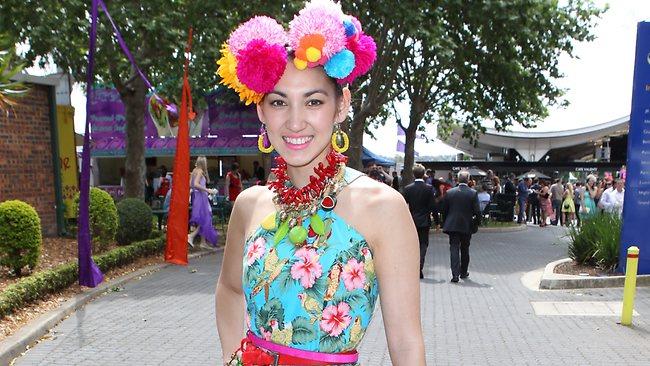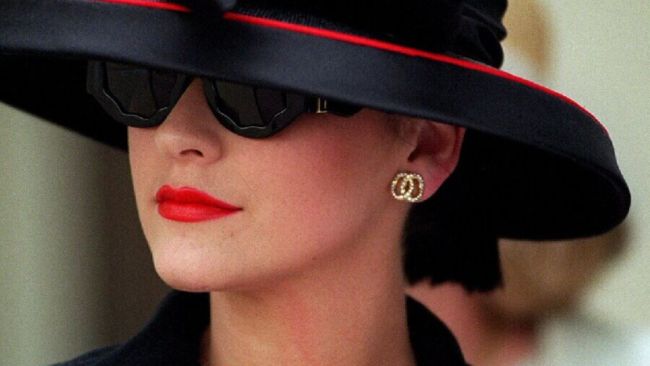On track, off trend
IS racewear a bastion of elegant dressing or a relic of the past?

TURN up to Flemington, Eagle Farm or Randwick during spring racing season wearing gloves, handbag, matching shoes and a giant hat and nobody bats an eyelid. Try the same outfit anywhere else, however, and people may stare.
Racewear, particularly in the members' stands, is defined by rules that err on the conservative: suit and tie for gents and, for ladies, covered shoulders, hemlines no shorter than the knee and the requisite headwear. Seen away from the track, all that prim and polish seems out of place in modern, laidback Australian society. Has racewear become a fashion anachronism or is it a subculture embraced by stylish women?
Angela Menz, a serial Fashions on the Field winner since 2003, believes it is the latter. "A lot of women like that they can wear a really ridiculous hat and it's completely normal at the races," says Menz. "There are not really any other places that you can get away with it."
Edwina McCann, editor of Vogue Australia, agrees, saying: "The rules make a racing event really special. Adhering to the rules is all part of the ritual."
Few occasions, save for the odd wedding, provide an excuse to don fashion finery, making the spring carnival a social and sartorial fixture for many women.
"Australia as a whole isn't predisposed to 'dressing up', thanks to our weather and our lifestyle," says McCann. "One of the most enjoyable parts of attending the races is having the opportunity to dress up."
A new generation is heading trackside for that very reason, according to vice-chairman of the Victoria Racing Club, Amanda Elliott. "At Flemington, our young membership is growing more than any other," she says. "And one of the reasons, if you speak to any of our young members, is that they want to dress up and meet kindred spirits."
Menz, 28, agrees that for young women the social aspect is as appealing as the style. "(I'm) able to talk to other women who have that same interest in fashion and the horses," she says. "Everyone does have that common interest."
Even those not vying for a sash see race day as an occasion worthy of a new purchase or two. Research conducted by business consultancy IER at Flemington last year found Victorians spent big leading up to the industry's biggest event. "For the four days of the 2011 Melbourne Cup carnival (racegoers bought) 63,000 hats and fascinators, 52,000 pairs of shoes, 34,000 dresses, 28,000 handbags; all up about $28.5 million," says Elliott. Women splurged on an average of 2.8 new fashion items each, compared with 1.7 for men. Extrapolate those figures from one track in one city across the nation and racewear is serious business.
But is it fashionable? "Ladylike, sophisticated style will always have a place in fashion," says McCann. "People like Kate Middleton, especially, have brought more attention to it with her elegant sheaths and knee-length skirts. She knows how to dress for the occasion and always looks modern."
Although beset by rules, McCann says race attire should be no impediment to individuality. "There are ways to stand out while remaining respectful. I love seeing how different people interpret racewear," she says. "An elegant pant suit is just as exciting and of-the-moment as a beautiful lace dress in a bright colour."
Ever since British model Jean Shrimpton shocked the establishment in 1965, turning up to the Victoria Derby sans gloves, hosiery and hat in an above-the-knee shift, women have toyed with the regulations, bringing racewear closer to the prevailing fashions. Menz believes bending the rules is an asset in Fashions in the Field, a tradition which turns 50 this year. "It's sometimes the biggest gambles that pay off," she says. "Something that's a little bit more out there, a little bit outrageous, if you can pull it off, then I think that's when you're going to do well."
Menz is not averse to a short skirt or something strapless, asserting the rules of racewear haven't evolved with the times, leaving a grey area where fashion and tradition meet. Although a strictly adhered-to race look no longer translates easily into other areas of life, Elliott says racewear was once front and centre of the fashion scene. "Racing has been happening at Flemington since 1840, four years after Melbourne was settled. If you look at the old photographs, the women were absolutely beautifully dressed. They used to get all the designers from Paris and London. I really believe the perception of Melbourne as a fashionable centre of Australia comes from the races."
That it no longer represents the pinnacle of fashion seems no handicap for the popularity of racewear. "Racing events are about the horses, of course," says McCann. "But fashion comes a close second."


